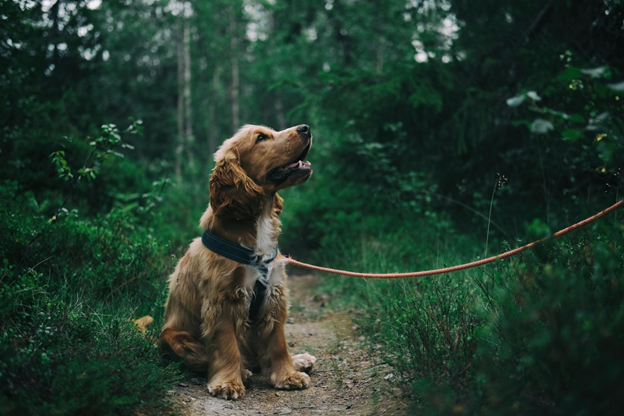Leash pulling is one of the most common challenges dog owners face, especially with young or energetic dogs. Whether you’re walking a stubborn Labrador or an excitable rescue mix, having the right equipment and understanding how to use it effectively is key to improving control and ensuring your dog’s safety. This comprehensive guide will explore the best options for dog collars and dog harnesses, the pros and cons of each, and how to decide which solution is best for your unique situation.
Table of Contents
Understanding Why Dogs Pull
Dogs pull on the leash for various reasons: excitement, lack of training, fear, or simply because they’ve learned that pulling gets them where they want to go faster. It’s not necessarily a sign of disobedience it’s often just a lack of clear communication and structure. That’s why selecting the right tools is essential for both comfort and training.
In many cases, pulling starts early when dogs are curious and eager to explore their environment. If not addressed, it becomes a reinforced behavior especially when pulling results in progress. Some breeds are naturally more prone to pulling due to their working or herding instincts, while others may pull out of anxiety or overstimulation. Understanding the underlying cause helps you choose appropriate gear and training techniques. By combining proper equipment like dog collars or dog harnesses with positive reinforcement, pet owners can guide their dogs toward calm, responsive walking behavior over time.
1. Dog Collars vs. Dog Harnesses: What’s the Difference?
Dog Collars
Dog collars are the most common walking accessory. They fit around the neck and can be used for identification, control, or attachment to a leash.
Pros:
- Lightweight and easy to wear all day
- Ideal for dogs that walk calmly on a loose leash
- Useful for ID tags and quick leash attachment
Cons:
- Can put pressure on the throat, especially for pullers
- May cause damage to the trachea if the dog pulls hard
- Not ideal for breeds prone to respiratory issues (e.g., Pugs, Bulldogs)
Dog Harnesses
Dog harnesses wrap around the chest and shoulders, distributing pressure more evenly than collars.
Pros:
- Offers better control for strong pullers
- Reduces risk of neck injury
- Great for training puppies or leash-reactive dogs
Cons:
- Some dogs may find harnesses uncomfortable at first
- Can cause chafing if poorly fitted
- May encourage pulling if the harness design promotes it (e.g., back-clip harnesses)
2. Types of Dog Collars for Pullers
Martingale Collars
Designed for gentle control without choking. Commonly used for training or dogs with narrow heads like Greyhounds.
Benefits:
- Tightens slightly when the dog pulls, without choking
- Prevents escape while maintaining comfort
3. Head Collars (e.g., Halti, Gentle Leader)
A head collar fits around the dog’s muzzle and neck, steering the head gently.
Benefits:
- Offers maximum control over direction
- Reduces pulling significantly
- Effective for strong, reactive dogs
Challenges:
- Can take time for dogs to adjust
- Misuse can lead to injury
4. Prong or Pinch Collars
These collars apply pressure around the neck when a dog pulls.
Caution: Should only be used under professional supervision. While they can offer control, misuse can cause pain and fear.
5. Types of Dog Harnesses for Pullers
Front-Clip Harnesses
These harnesses have a leash attachment on the chest.
Benefits:
- Redirects pulling by turning the dog toward you
- Ideal for training and improving leash manners
Tradeoffs:
- May tangle the leash under the legs if not used correctly
Back-Clip Harnesses
Most common style, with the leash attached at the back.
Benefits:
- Comfortable for everyday wear
- Easy to put on
Challenges:
- Encourages pulling in some dogs due to opposition reflex
Dual-Clip Harnesses
Includes both front and back attachments, offering flexibility.
Benefits:
- Great for progressive training
- Offers both redirection and support
Factors to Consider When Choosing Between Dog Collars and Dog Harnesses
1. Breed and Size
Small dogs with delicate necks may benefit from harnesses, while large breeds may respond well to head collars or training collars.
2. Behavior and Temperament
Is your dog highly reactive? Easily excited? A front-clip harness or head collar may offer the best control.
3. Health Conditions
Dogs with respiratory issues or previous injuries should avoid pressure on the neck.
4. Walking Environment
City streets vs. open trails can change the type of control needed. Crowded areas require more precision.
Training Is Key
No collar or harness is a replacement for proper training. Teaching your dog to walk nicely on a leash requires patience, consistency, and positive reinforcement. Consider the following tips:
- Use treats or praise to reward good walking behavior.
- Practice inside first where there are fewer distractions.
- Keep walks short in the beginning to avoid frustration.
- Avoid yanking the leash, which can cause confusion and anxiety.
Tools Alone Don’t Fix Pulling
Choosing the right equipment is just one piece of the puzzle. Tools like front-clip harnesses or head collars work best when combined with a consistent training plan. While dog collars and dog harnesses can offer better control, the long-term goal should always be a loose-leash walk.
Common Mistakes to Avoid
- Using the wrong size gear: Improper fit can reduce effectiveness and cause injury.
- Switching tools without training: Dogs need time to adjust.
- Ignoring behavioral issues: Pulling can stem from anxiety or overexcitement.
When to Consult a Professional
If your dog’s pulling is persistent or accompanied by other challenging behaviors like lunging, excessive barking, or leash reactivity toward people or other dogs, it may be time to seek help from a certified dog trainer or behaviorist. While switching between different dog collars and dog harnesses can help reduce strain and improve control, these tools alone might not address the root of the behavior. Professional trainers bring a deep understanding of canine psychology and use structured, evidence-based methods to reshape unwanted habits.
Every dog is different what works for a small, energetic terrier may not suit a large, strong-willed breed like a Husky. A trainer can assess your dog’s specific needs, temperament, and environment, then create a customized training plan. This plan might include counter-conditioning, positive reinforcement, desensitization techniques, and appropriate leash-handling skills. More importantly, a professional can help you avoid common mistakes such as using the wrong type of correction or misreading your dog’s signals that can inadvertently worsen the behavior.
Working with a trainer also provides accountability and support. You’ll learn how to read your dog’s body language, maintain consistency in commands, and reinforce good leash manners at home and in distracting environments like parks or busy streets. In cases involving fear or aggression, professional intervention is not just helpful it’s essential for the safety of both your dog and the people or animals around you.
Ultimately, training is a long-term investment in your dog’s wellbeing and your shared relationship. Don’t hesitate to get help when needed.
Final Thoughts: Finding the Right Balance
Dog collars and dog harnesses both have their place in managing leash pulling. The key is to understand your dog’s needs, evaluate the pros and cons of each tool, and commit to consistent, patient training. There’s no one-size-fits-all solution, but with the right approach, you can enjoy more peaceful, enjoyable walks with your dog.
Remember: The goal isn’t just to stop pulling it’s to build trust and clear communication between you and your dog, one walk at a time.




